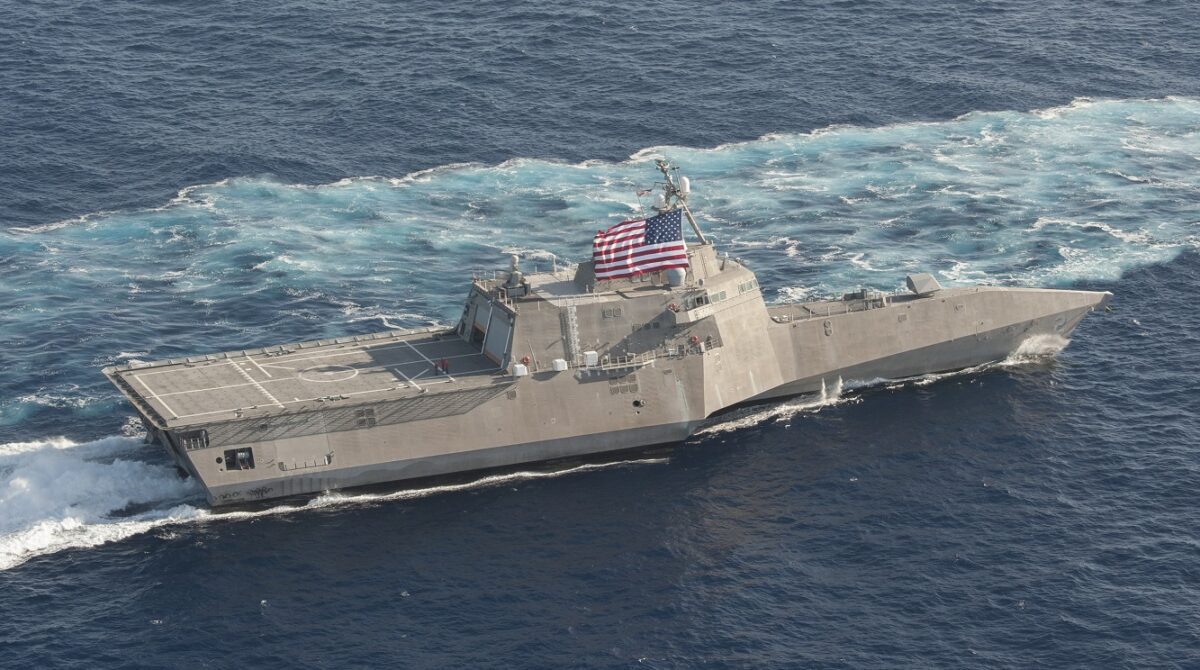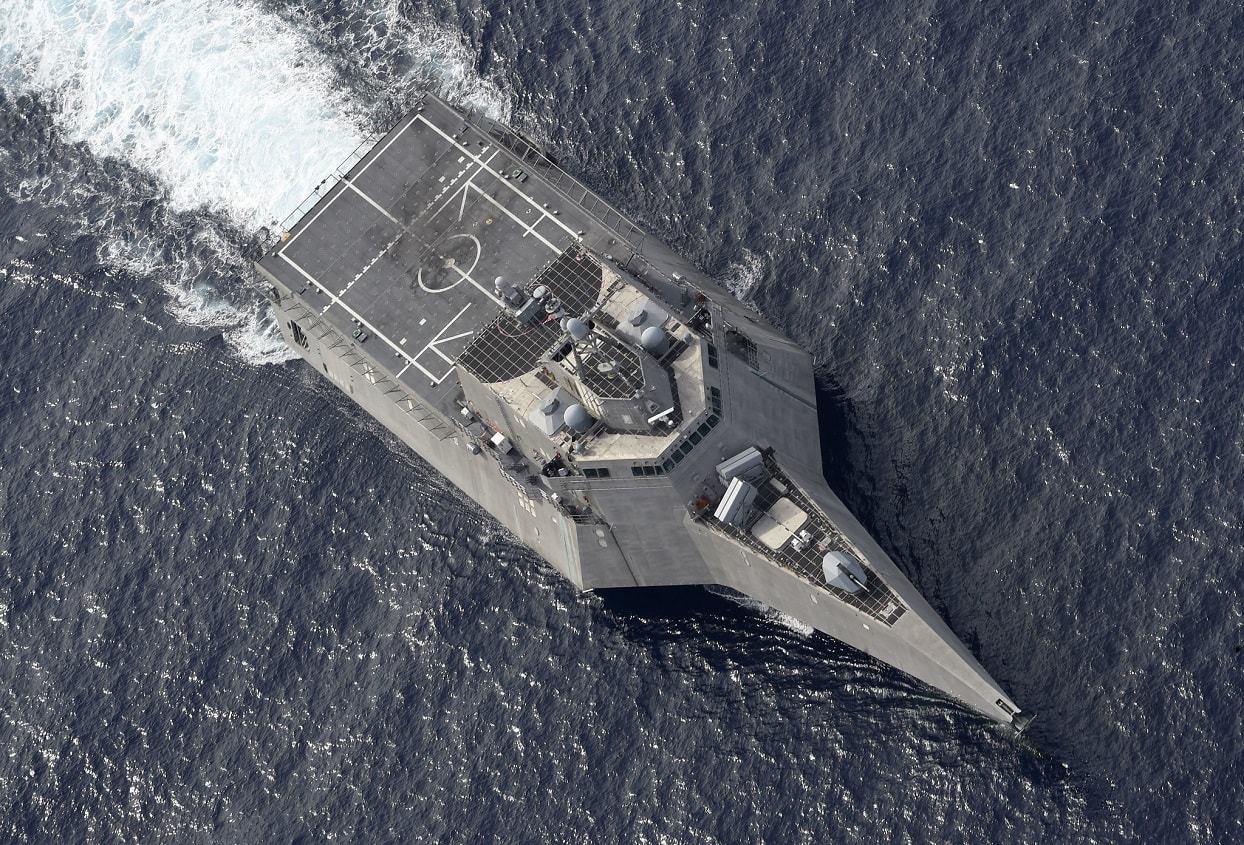The U.S. Navy commissioned its latest Freedom-variant littoral combat ship (LCS) over the weekend, despite the vessel’s expected short tenure in the service.
Designed to operate in near-short environments, the Navy’s Freedom- and Independence-class ships can sail in the open ocean as well as along enemy coast lines.
These ships had high potential, but developmental problems, acquisition adjustments, low combatant command demand, and other roadblocks have soured the platform’s name.
In fact, the Navy announced its intent to decommission nine Freedom-class LCS last spring in order for the service to free up funding for other priorities.
Despite the service’s goal to divest in its LCS fleet, the USS Marinette has officially been commissioned as its thirteenth Freedom-class LCS.
Introducing the Navy’s LCS
Initially designed to provide a small, fast, inexpensive and maneuverable family of ships, the LCS can take on a litany of roles. From surveillance and anti-submarine warfare to special operations and logistics, these ships were intended to aid the Navy’s mission to “unman the front lines.” They can perform sonar sweeps for mines and launch weaponry against enemy submarines in combat.
When the LCS program was initiated in the early 2000s, it was meant to move through production quickly in comparison to the Navy’s other ships.
By 2010, the service awarded manufacturer Lockheed Martin and Austal AUSA with a contract to construct build up to 10 ships each. Around this time, construction commenced on the Freedom-class LCS (USS Freedom) and Independence-class LCS 2 (USS Independence).
Lockheed Martin manufactures the smaller of the two LCS variants, which sport steelhulls and a semi-planing monohull. Austral USA produces the larger of the two variants, which are just over 420-feet long.
The vessels’ performance, however, has not lived up to expectations. A recent report released by the Office of the U.S. Director, Operational Test & Evaluation stated that the survivability of the LCS was “challenged in a contested environment against selected kinetic threat types,” while survivability for missions in cyber-contested environments was “currently unknown.”
U.S. Navy’s Littoral Combat Ships Useless?
Perhaps the most glaring design flaw involving the LCS is cracks. Last year, The Navy Times reported that cracks presented in these vessels increase in magnitude when the ships travel faster than 15 knots.
Although this issue presents more in the Independence-class ships, the Freedom-class LCS are certainly not void of problems.
Transmission-related issues largely plague the Freedom’s class, impacting the vessels’ reliability. Due to these issues, three Independence-class vessels have been decommissioned so far, including the lead ship, USS Independence, which retired in 2021 after a mere 11 years in the Navy.
The lead ship of the Freedom-class LCS, USS Freedom, was decommissioned in the same year.
Despite its clear limitations, some analysts believe the LCS is not completely useless.
The vessels’ ability to access ports and coastal areas of island chains is something deeper-draft ships cannot do. Considering the escalating tensions between Beijing and Washington, it seems probable that the Navy could need to access dangerous coastal areas in the future to clear mines or take out small, swarming enemy boats.

The littoral combat ship USS Independence (LCS 2) is underway in the Pacific Ocean. (U.S. Navy photo by Chief Mass Communication Specialist Keith DeVinney/Released)
Maya Carlin, a Senior Editor for 19FortyFive, is an analyst with the Center for Security Policy and a former Anna Sobol Levy Fellow at IDC Herzliya in Israel. She has by-lines in many publications, including The National Interest, Jerusalem Post, and Times of Israel. You can follow her on Twitter: @MayaCarlin.

